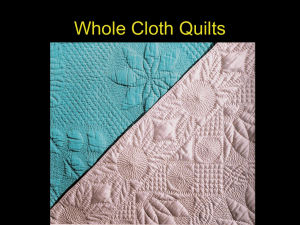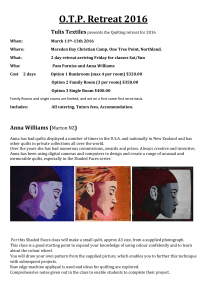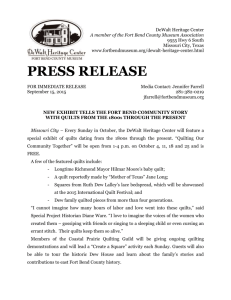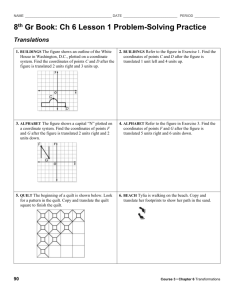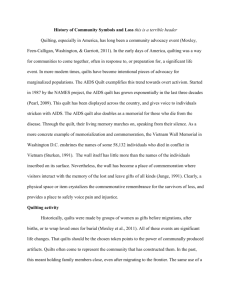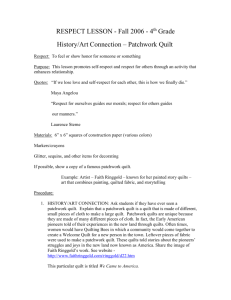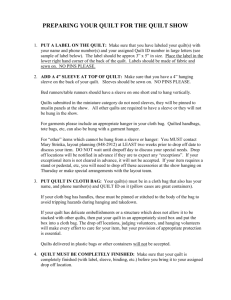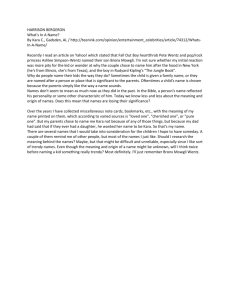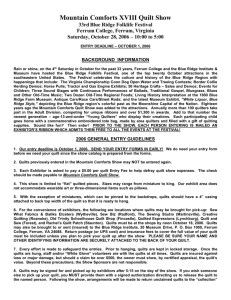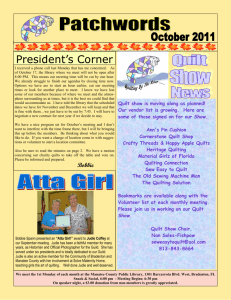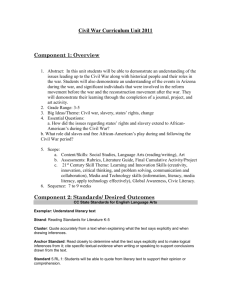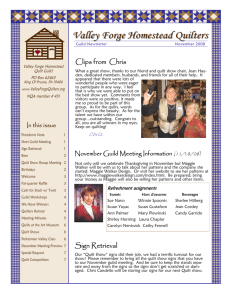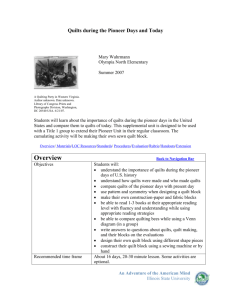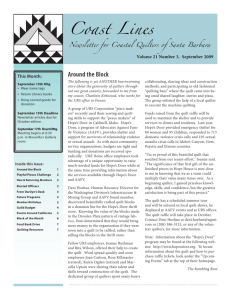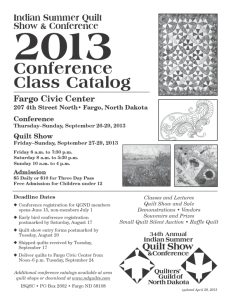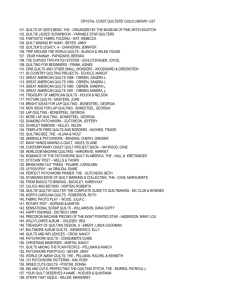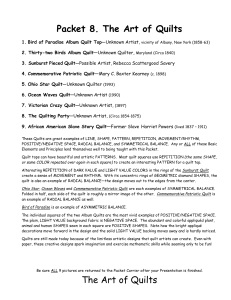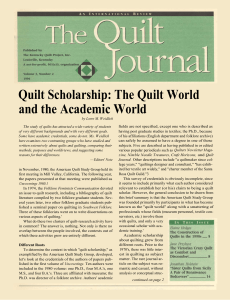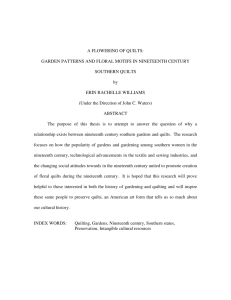here - British Quilt Study Group
advertisement
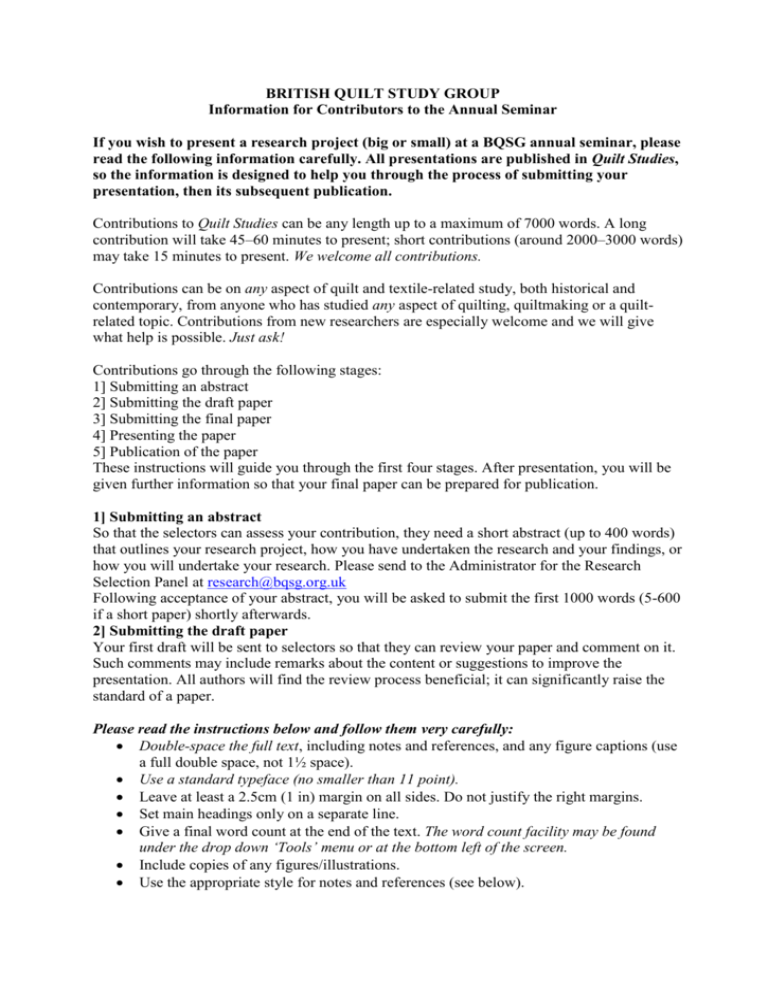
BRITISH QUILT STUDY GROUP Information for Contributors to the Annual Seminar If you wish to present a research project (big or small) at a BQSG annual seminar, please read the following information carefully. All presentations are published in Quilt Studies, so the information is designed to help you through the process of submitting your presentation, then its subsequent publication. Contributions to Quilt Studies can be any length up to a maximum of 7000 words. A long contribution will take 45–60 minutes to present; short contributions (around 2000–3000 words) may take 15 minutes to present. We welcome all contributions. Contributions can be on any aspect of quilt and textile-related study, both historical and contemporary, from anyone who has studied any aspect of quilting, quiltmaking or a quiltrelated topic. Contributions from new researchers are especially welcome and we will give what help is possible. Just ask! Contributions go through the following stages: 1] Submitting an abstract 2] Submitting the draft paper 3] Submitting the final paper 4] Presenting the paper 5] Publication of the paper These instructions will guide you through the first four stages. After presentation, you will be given further information so that your final paper can be prepared for publication. 1] Submitting an abstract So that the selectors can assess your contribution, they need a short abstract (up to 400 words) that outlines your research project, how you have undertaken the research and your findings, or how you will undertake your research. Please send to the Administrator for the Research Selection Panel at research@bqsg.org.uk Following acceptance of your abstract, you will be asked to submit the first 1000 words (5-600 if a short paper) shortly afterwards. 2] Submitting the draft paper Your first draft will be sent to selectors so that they can review your paper and comment on it. Such comments may include remarks about the content or suggestions to improve the presentation. All authors will find the review process beneficial; it can significantly raise the standard of a paper. Please read the instructions below and follow them very carefully: Double-space the full text, including notes and references, and any figure captions (use a full double space, not 1½ space). Use a standard typeface (no smaller than 11 point). Leave at least a 2.5cm (1 in) margin on all sides. Do not justify the right margins. Set main headings only on a separate line. Give a final word count at the end of the text. The word count facility may be found under the drop down ‘Tools’ menu or at the bottom left of the screen. Include copies of any figures/illustrations. Use the appropriate style for notes and references (see below). General Style Capitalize the names of specific quilt designs and the names of contemporary quilts (e.g., Irish Chain, Homage to Klimt). th Dates and numbers: use nineteenth century (not 19 ); 1880s (not 1880’s); 1932–1940 (not 1932–40); spell out numbers under ten; % not percent. Give dimensions in metric with imperial measurements in parentheses, e.g. 2.5 cm (1 in.). Quotations: short quotes can be incorporated in the text inside single quotation marks. Longer quotes (>60 words) should be set as an extract, without quote marks, and indented on a new line. Omissions from quotes should be indicated by an ellipsis (…). Remember to attribute all quotes to their original source. Notes and reference It is important to cite appropriate references (sources of your information) in your text. The following instructions are intended as a general guide to the reference system in Quilt Studies: Use a sequence of numbers for all notes and cited references, with the full list of notes and references at the end of the contribution. Do not use footnotes. Notes and references should be listed in the order in which they appear in the text. Within the text, place the number referring to the note or reference at the appropriate point, preferably at the end of the sentence. The reference number should follow any adjacent punctuation mark (e.g. ... quilting patterns.1). Notes should include all references to: published works (books, articles, papers); unpublished works; oral information acquired (interviews, conversations); references to material in collections; any other sources of data. All notes and references should be double checked for accuracy. This is the area where most errors occur. Present published references in the following style: Titles of books and articles: maximal initial caps. Books: author, title in italics (place: publisher, date), and page number: e.g. Averil Colby, Quilting (London: Batsford, 1972), 142. Multi-author works: list all names up to and including four authors; if there are more than four, then give first author’s name followed by et al. In practice, it is likely that citations from multi-author works will have an editor: e.g. G. Lansbury, ‘The Development of the Block Quilt’, in C. Lewis (ed.), Quilting in the Nineteenth Century (London: Batsford, 1987). Journal articles: author, ‘title’ (roman in single quotes), publication title (in italics), volume or part number, year of publication (in parentheses), page numbers (if possible), e.g. Jeanette Lasansky, ‘T-Shaped Quilts: A New England Phenomenon’, The Magazine Antiques (December 1997), 842–5. If a volume number is given, style as follows: author, ‘Title of article’, Journal Title, 4/6 (1987), 54–9. Vol/part number precedes date; if part number is also given, style using solidus, e.g. 10/1 Chapter titles: initial capital for first word only, roman in single quotes. Oral communications: references to oral communication should cite date, interviewee and place or manner of interview/communication (e.g. telephone). Reference shortened to ‘pers. comm.’. Material taken from the web: give URL followed by date of access in parentheses, e.g. (accessed June 2007). Reference to quilts in museum collections: When discussing quilts in museum collections please give the accession number in brackets following the first reference to the quilt. Illustrations: Aim for the highest quality of illustrative material available to you. Good quality art work only will be accepted for line illustrations. Illustrations should be provided as high resolution .tiff or .jpg files (>300 dpi). Please supply a separate file of captions and indicate clearly in the main text where you would like each illustration to appear ideally (we may need to move them during typesetting and page make up). Aim at a maximum of 15 images. However, this is just a rough guide as the actual number of illustrations we have space for will depend on the needs of other contributors. 3] Submitting the final paper Your draft paper will be returned with the selectors’ comments. It is usually necessary to make some revisions to the paper in light of the comments, though these may be very small. Once all revisions have been completed, the final version, including images, should be submitted to the Administrator for the Research Panel (research@bqsg.org.uk) at least a month before the date of the seminar presentation. 4] Presenting the paper The final version of the paper will be presented at the annual seminar. It is advisable to check how long a presentation will take – presentations over 60 minutes long are not encouraged. Following presentation at the seminar, there will be a brief meeting regarding preparing your paper for publication at which time a full paper copy of both text and illustrations will be required. You will be given further written guidelines to help you with this final stage. BQSG Research Panel research@bqsg.org.uk
